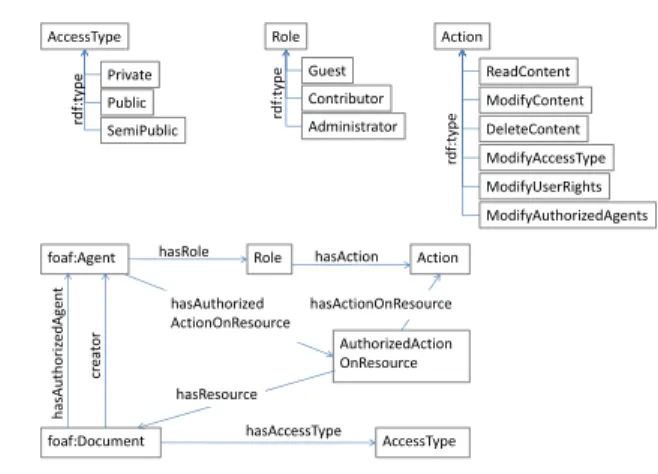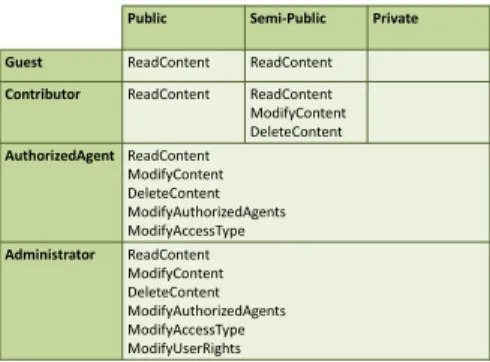Ontology-Based Access Rights Management
Texte intégral
Figure


Documents relatifs
Recalling existing international and regional treaties and legal instruments, in particular article 19 of the United Nations Convention on the Rights of the Child and article 16 of
There are also several other ontologies and resources that are widely used to classify biological entities rep- resented in models with standard values (Swainston and Mendes, 2009):
In textual rule-based models, it is difficult to store annotations within a modelling entity since Kappa and BioNetGen represent modelling entities such as agents and rules as
We have used a rule-based machine learn- ing algorithm (WHISK) combined with a rule-based automatic ontology projection method and a rote learning technique.. The combination of
For instance, with the help of a data protection on- tology, a data controller could implement a knowl- edge system that could help data subjects make queries related to their
As described in [48], the process consists of the following steps: (a) User specifies conditions of joining to its LAgent, (b) the LAgent interacts with the Client Information
Laboratoire Parole et Langage (LPL), a speech research laboratory of the French Centre National de la Recherche Scientifique (CNRS), is in charge of an archive
While recycling increases the socially e¢ cient level of prior extraction, the possibility of recycling makes the extraction sector too parsimonious in setting the level of